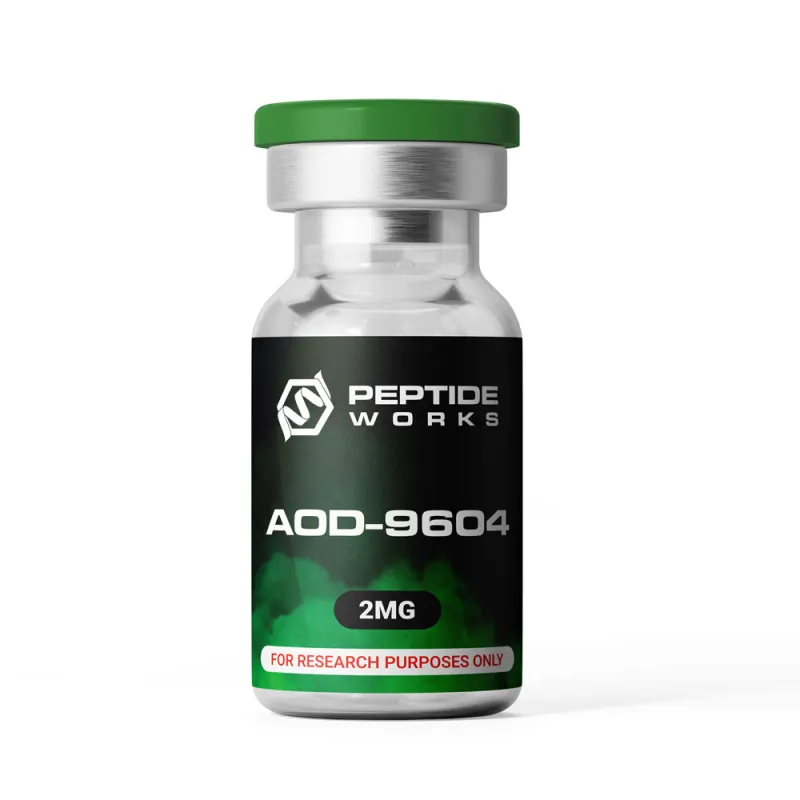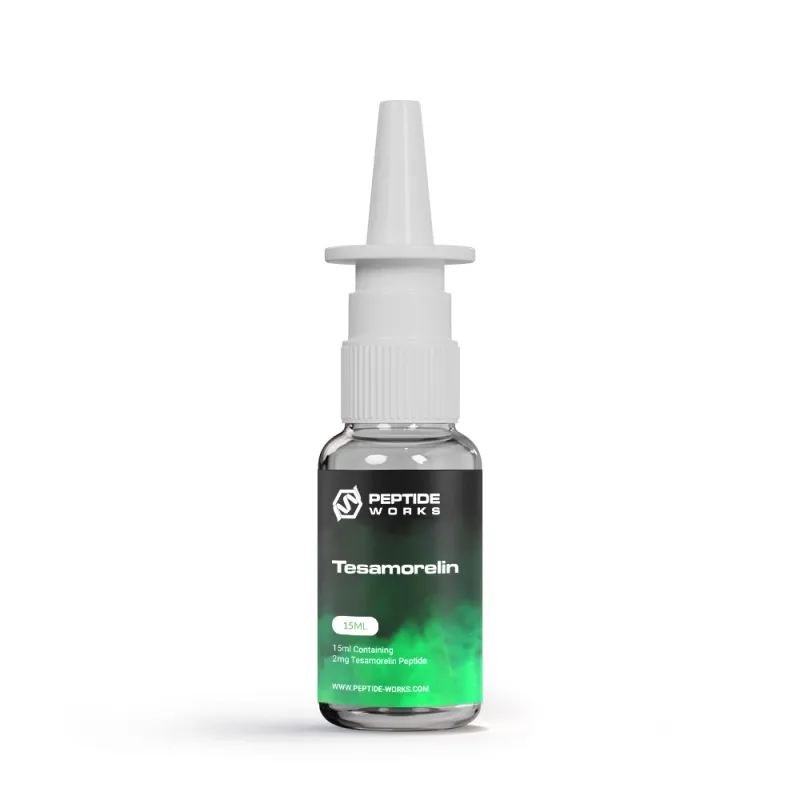
PROMO!
First order? Get 10% OFF with this code: 1storder
Written by

Tesofensine is a research peptide studied for its impact on weight management and appetite control. Unlike standard appetite control capsules, Tesofensine works on the brain’s neurotransmitters. It blocks the reuptake of serotonin, dopamine, and noradrenaline, which raises the levels of these chemicals. Higher levels of these signals influence the brain areas that regulate hunger and satiety.
In preclinical research, Tesofensine reduced food intake and body weight in obese animal models. Clinical studies also reported that participants taking Tesofensine experienced stronger feelings of fullness, which resulted in noticeable weight loss over several months. These results highlight Tesofensine’s potential role in regulating appetite and promoting weight reduction, as observed in scientific studies.
To understand Tesofensine’s potential more clearly, it helps to see how quickly its effects appear in different studies.
Discover Tesofensine from Peptide Works, a research peptide studied for its effects on neurotransmitters linked to appetite control and weight management.

Research shows Tesofensine can influence appetite quickly, but the timing varies between animal and human studies. In obese rats, reduced food intake was observed within hours of the first dose, suggesting a rapid impact on satiety signals. These results highlighted how Tesofensine acts almost immediately at the neurotransmitter level.
Human clinical trials reported a different pattern. Participants began noticing stronger feelings of fullness after several weeks, with satiety scores showing the clearest increase around week 12 of treatment. This slower onset suggests Tesofensine may work more gradually in individuals. Because of its effect on hunger and satiety, Tesofensine is often discussed in weight loss research as functioning similarly to an appetite control capsule.
Understanding the timing is important, but the real insight comes from examining how Tesofensine actually changes hunger signals inside the brain.
Tesofensine changes hunger by working on three brain chemicals: serotonin, dopamine, and noradrenaline. More serotonin makes meals feel filling for longer. Higher dopamine lowers the urge to eat for pleasure. Extra noradrenaline helps balance energy and cuts the need for constant snacking. Together, these changes help control appetite in a steady way.
Because of this mix, Tesofensine is often seen in research as acting like an appetite control capsule. It works in a different way than other peptides. For example, AOD-9604 helps with fat use, while Tesamorelin acts on growth hormone release. Tesofensine stands out because it targets brain signals linked to hunger.
Comparing Tesofensine with AOD-9604 helps highlight how different peptides contribute to weight management in distinct ways.

AOD-9604 is a fragment of the growth hormone sequence 176-191. Research shows it helps the body burn fat by boosting fat oxidation and limiting fat storage. In animal studies, this effect resulted in lower body weight without changes in blood sugar or IGF-1 levels. These results made AOD-9604 popular in weight management research.
However, unlike Tesofensine, AOD-9604 does not significantly alter hunger signals or satiety. Most studies report its role is more about fat metabolism than appetite suppression. For this reason, it works differently from an appetite control capsule. Tesofensine targets neurotransmitters, while AOD-9604 supports fat loss through metabolic pathways.
After appetite-focused Tesofensine and metabolism-driven AOD-9604, FTPP introduces a third angle by targeting fat tissue directly while showing some secondary effects on food intake.
Explore AOD-9604 from Peptide Works, a growth hormone fragment researched for its role in fat metabolism and weight reduction studies.
FTPP, also known as Adipotide, is studied as a fat loss peptide. It targets blood vessels that supply white adipose tissue, causing fat cells to shrink through apoptosis. In preclinical research, this process led to reduced body fat, lower weight gain, and better metabolic balance in obese animals. These results place FTPP in a different category from standard hunger control peptides.
Its role in appetite suppression is less defined. Some studies showed animals reduced food intake, but the main benefit came from direct fat metabolism. Unlike Tesofensine, which acts like an appetite control capsule by changing neurotransmitters, FTPP primarily drives fat oxidation and improves energy balance.
While FTPP blurs the line between appetite and fat metabolism, Tesamorelin shifts focus entirely, with research centering on fat redistribution rather than hunger control.
Shop FTPP from Peptide Works, a peptide examined for its ability to target white adipose tissue and support fat loss research.

Tesamorelin does not act like peptides that directly drive appetite suppression. Tesofensine, for example, boosts neurotransmitters that reduce hunger and cravings, while FTPP has shown some impact on food intake. In contrast, Tesamorelin is studied for its effect on fat loss and metabolism regulation, not satiety signals.
This makes Tesamorelin different from an appetite control capsule. Its main role in research is linked to fat redistribution and changes in body composition. Compared with AOD-9604 or Tesofensine, it contributes more to weight management peptides that target fat pathways than to hunger control or appetite regulation.
With these four peptides studied from different angles, it becomes valuable to compare them side by side to see how they align with appetite control and fat loss.
Check out Tesamorelin from Peptide Works, a GHRH analog studied for reducing visceral fat and improving body composition in research models.
Researchers study several peptides for weight management, but their strengths differ. Some focus on reducing hunger, while others mainly work on fat metabolism. The table below compares Tesofensine, AOD-9604, FTPP, and Tesamorelin in terms of their effects on appetite suppression and fat loss outcomes.
| Peptide | Appetite Control | Fat Loss |
|---|---|---|
| Tesofensine | Strong effect via neurotransmitters; increases satiety and reduces cravings | Moderate to strong; weight loss shown in human studies |
| AOD-9604 | Weak; limited appetite suppression reported | Strong fat oxidation and reduced fat storage |
| FTPP (Adipotide) | Limited; some reduction in food intake in animals | Strong in animal studies; shrinks white fat cells |
| Tesamorelin | Minimal; not proven to reduce appetite | Moderate; reduces visceral fat via IGF-1 pathway |
Each peptide shows unique benefits. Tesofensine acts most like an appetite control capsule, while AOD-9604 and FTPP lean toward fat metabolism. Tesamorelin focuses on visceral fat reduction rather than hunger control. Choosing the “best” peptide depends on whether appetite suppression or fat redistribution is the research goal.
These differences open the door to considering how appetite control research might evolve in the future.
The study of peptides shows promising directions for shaping how appetite and fat loss are managed in research. Tesofensine stands out for satiety control, while AOD-9604, FTPP, and Tesamorelin highlight other metabolic pathways. Together, they form the foundation for exploring what could define the next generation of an appetite control capsule.
At Peptide Works, we support this progress by providing high-quality research peptides to scientists worldwide. Our commitment to purity, consistency, and global accessibility enables researchers to test new ideas with confidence. As studies continue, these compounds may unlock new insights into hunger regulation and body composition, shaping the future of appetite control research.
All products discussed are supplied for research purposes only and are not intended for human use.
[1] Hansen HH, Jensen MM, Overgaard A, Weikop P, Mikkelsen JD. Tesofensine induces appetite suppression and weight loss with reversal of low forebrain dopamine levels in the diet-induced obese rat. Pharmacol Biochem Behav. 2013 Sep;110:265-71.
[2] Gilbert JA, Gasteyger C, Raben A, Meier DH, et al. The effect of tesofensine on appetite sensations. Obesity (Silver Spring). 2012 Mar;20(3):553-61.
[3] Heffernan M, Summers RJ, Thorburn A, Ogru E, et al. The effects of human GH and its lipolytic fragment (AOD9604) on lipid metabolism following chronic treatment in obese mice and beta(3)-AR knock-out mice. Endocrinology. 2001 Dec;142(12):5182-9.
[4] Barnhart KF, Christianson DR, Hanley PW, Driessen WH, et al. A peptidomimetic targeting white fat causes weight loss and improved insulin resistance in obese monkeys. Sci Transl Med. 2011 Nov 9;3(108):108ra112.
[5] Lake JE, La K, Erlandson KM, Adrian S, et al. Tesamorelin improves fat quality independent of changes in fat quantity. AIDS. 2021 Jul 15;35(9):1395-1402.
ALL CONTENT AND PRODUCT INFORMATION AVAILABLE ON THIS WEBSITE IS FOR EDUCATIONAL PURPOSES ONLY.
DISCLAIMER: These products are intended solely as a research chemical only. This classification allows for their use only for research development and laboratory studies. The information available on our Peptide Works website: https://peptide-works.com/ is provided for educational purposes only. These products are not for human or animal use or consumption in any manner. Handling of these products should be limited to suitably qualified professionals. They are not to be classified as a drug, food, cosmetic, or medicinal product and must not be mislabelled or used as such.
Peptide Works
Related Articles

How effective could Orexin Addiction Therapy be?
Have you ever wondered why some people find it so hard to stop addictive habits, even when they truly want

Can NAD Therapy Improve Cognitive Performance?
NAD Therapy is gaining attention in research for its possible role in brain health. NAD+ (nicotinamide adenine dinucleotide) is a

Enhancing Energy with NAD+ Supplements
Energy is the driving force behind focus, movement, and recovery. When cells have less energy to work with, the body